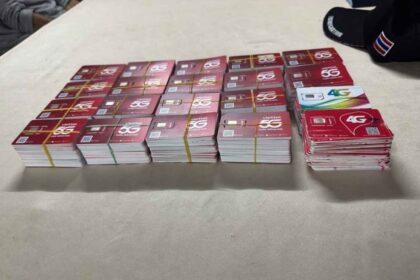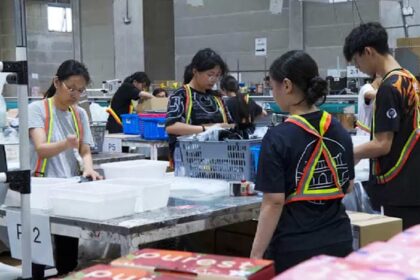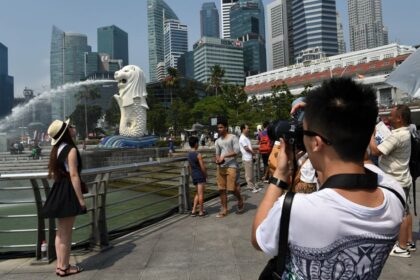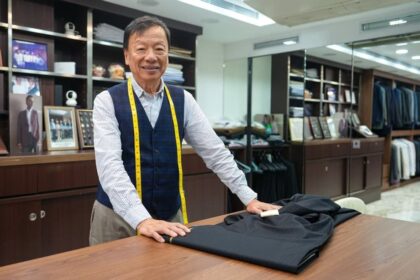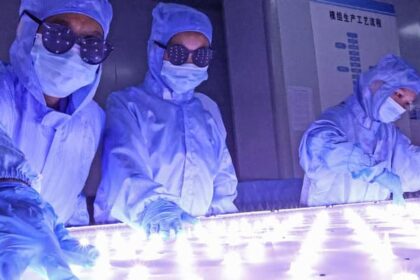Inside the rise of a battery powerhouse
In 2005, China had two manufacturers to supply batteries for electric vehicles. Today it produces more than three quarters of the lithium ion cells the world uses. The sprint from near zero to dominance was not an accident. It grew out of a long campaign that mixed early public investment, consumer incentives, and a fierce race among dozens of private and state linked firms. A showcase moment arrived during the 2008 Beijing Olympics, when city buses ran on lithium ion packs and signaled a national bet on electric mobility. The rest of the world had invented the technology and led the first markets. China decided to scale it faster and cheaper.
- Inside the rise of a battery powerhouse
- What set China on this course
- From policy to factories, talent, and lower costs
- The technology choices that changed the market
- Scale and supply chain control
- Global ripple effects and the new battery geopolitics
- Can rivals catch up on current lithium ion
- Where next generation batteries fit
- What this means for automakers and consumers
- Key Points
Two names now define the sector: Contemporary Amperex Technology Limited (CATL) and BYD. By 2017, CATL had climbed to the top of the global supplier rankings, while BYD combined battery and vehicle making under one roof. Both companies refined manufacturing techniques, built close ties with materials and equipment suppliers, and learned to move from lab concepts to mass production quickly. The result is a system that can add capacity at speed, deliver consistent quality, and drive down costs year after year.
What set China on this course
Policy makers as early as 2001 concluded that leapfrogging to battery electric cars would be smarter than catching up in internal combustion. They wrote new energy vehicles and rechargeable batteries into national plans. After the global financial crisis, stimulus money and municipal projects accelerated pilots in transit and taxis. The Ten Cities, Thousand Vehicles program seeded demand in key urban clusters. Large cities made plates easier for buyers of electric cars, cutting long waits that still deter gasoline buyers.
Consumer cash subsidies and tax breaks started in 2009 and ran for more than a decade. Public funds also built charging networks. Local governments partnered with firms like BYD to electrify buses and work fleets. These measures created steady orders that let factories gain experience. Tesla later picked Shanghai for its first plant outside the United States. That site became a giant export hub and a training ground for suppliers, including pack makers and component firms.
Crucially, Beijing shaped the market to favor domestic suppliers. Starting in 2015 and tightened in 2016, national subsidy rules excluded cars that used batteries from unapproved foreign brands. Automakers that wanted incentives had to source cells from a domestic white list. That channeled business to a small group of local champions and forced quick scale up. The policy eventually relaxed, but by then Chinese producers had deep experience and global cost advantages.
From policy to factories, talent, and lower costs
In battery manufacturing, practice drives down costs as much as technology. Data from multiple markets show that every time a supplier doubles its total output, unit costs fall by roughly 9 percent. Over years of rapid expansion, learning by doing accounted for an estimated 40 percent of the drop in battery prices, outpacing gains from general industry advances or simple economies of scale. Consumer subsidies and fleet procurement magnified that effect, because higher sales volumes generated more production experience, which then fed back into lower costs and higher demand.
China also invested in people. Universities created specialized courses in electrochemistry and materials science. The country now trains large cohorts of battery engineers and technicians each year. Companies can staff giant plants quickly and run multiple shifts with experienced crews. An extensive supplier network grew alongside the cell makers, from separators and electrolytes to equipment makers. That ecosystem shortened development cycles and improved yields.
The money was large. Over the past decade, public support for electric vehicles and batteries has exceeded 200 billion dollars. Subsidies came with technical requirements tied to range, energy density, and safety, which pushed rapid improvement. Mandates required automakers to build and sell electric models to earn credits. Local content rules, during the critical build out period, kept most benefits inside the country. Together these steps turned a protected home market into a springboard for global leadership.
The technology choices that changed the market
Technology strategy mattered as much as scale. Chinese producers concentrated on lithium iron phosphate chemistry for mass market cars and buses. LFP cells use inexpensive iron and phosphate, avoid cobalt and much of the nickel supply that is concentrated abroad, and have strong safety performance. Early versions suffered from lower energy density, which limited range. Continuous improvement in materials, packaging, and production lifted performance while preserving cost advantages, which suited vehicles priced for volume buyers.
LFP vs NMC, and the BYD blade
Nickel manganese cobalt cells still power many long range and luxury vehicles, and Japan and South Korea built strong portfolios in that chemistry. For makers targeting high volumes, LFP became the default choice. BYD introduced a blade shaped cell that fits large cells densely in the pack to save space and weight. Manufacturers also moved from module based packs to cell to pack and even cell to chassis designs that mount cells directly into the vehicle structure. These steps removed parts, simplified assembly, and cut cost.
A fast charging race
Firms are also racing to speed charging without sacrificing battery life. The latest CATL Shenxing generation advertises hundreds of kilometers of range added in a few minutes on a high power charger, and rivals report similar gains. Improvements in anode materials, electrolyte formulation, and thermal control are making LFP more versatile, even in cold climates. The technology gap with Western competitors has widened in manufacturing methods and speed of deployment.
Scale and supply chain control
Beyond chemistry, China built control of key inputs. The country processes a large share of the lithium that ends up in batteries, around seven tenths by many estimates, and dominates graphite processing for anodes, with more than nine tenths of capacity. It holds an overwhelming share of LFP production capacity. Cell manufacturing capacity is concentrated in China as well, accounting for more than four fifths of the global total. While much of the raw mineral mining happens abroad, Chinese firms finance and operate links from extraction to refining, component manufacture, and final pack assembly.
That reach translates into speed and cost discipline. Flagship plants can stamp out a cell in about a second and assemble a battery pack in minutes. High utilization spreads fixed costs across massive output. BYD integrates mines, materials, cells, and vehicles under one group, while CATL supplies both domestic brands and international automakers. Vertical integration lowers transport costs and reduces delays. It also gives planners flexibility to shift output between automotive and stationary storage when demand fluctuates.
Global ripple effects and the new battery geopolitics
The industry shift has been global. Chinese battery makers now supply or partner with major automakers across the world. CATL packs are inside models from Tesla, BMW, Mercedes Benz, Volkswagen, and many Chinese brands. BYD has focused on its own vehicles, while growing a third party battery business. Exports of Chinese electric cars have surged as domestic competition pressures prices, with Europe absorbing a growing share. The United Kingdom has become a key entry point, since its market remains relatively open.
Trade policy is reshaping that expansion. The United States has raised tariffs on batteries, materials, and some vehicles, and set rules to limit use of Chinese content for tax credits. The European Union has launched trade actions over subsidies and nudged Chinese firms to build local factories to serve the region. Chinese companies are investing in plants in several European countries to manage risk, align with local rules, and be closer to customers. At the same time, automakers outside China are working to diversify material sourcing and recycle more metals.
Beijing has tightened its grip on key know how. In mid 2025, new export licensing rules covered several core technologies for LFP battery making and for refining lithium. Transfers of these technologies abroad now need government approval. The move follows earlier actions on rare earth magnets. Licensing requirements add uncertainty to foreign projects that had planned to use Chinese equipment or processes. The Ford plant in Michigan designed to produce LFP batteries using Chinese design know how is one high profile example facing fresh questions.
Can rivals catch up on current lithium ion
Competing head to head on today’s lithium ion technologies is hard. China’s cost base, tight supplier networks, and depth of experience give it a lead that would be expensive for others to replicate. Matching that with subsidies would require very large and sustained spending. The United States, Europe, Japan, and South Korea are investing to build more local capacity, but much of the near term output still depends on Asian equipment, materials, and engineering talent.
Some rivals are recalibrating strategy. South Korean champions that focused on nickel heavy cells for premium cars are adding LFP production for volume models, but yield, scale, and material costs still favor Chinese plants. Their factories outside China have struggled with low utilization during periods of slower electric car sales. Many Western automakers are forming joint ventures with battery specialists, co locating assembly near car plants, and signing long term contracts for lithium and nickel. Those steps narrow gaps, yet the learning curve advantage remains large.
Where next generation batteries fit
Breakthrough chemistries could open a new contest. Solid state designs with lithium metal anodes promise higher energy per kilogram, improved safety, and fast charging. Sodium ion cells are attractive for lower cost storage and less reliance on scarce minerals. Several Chinese, American, European, and Japanese firms have working prototypes and small production lines. The hard part is scaling. New chemistries often need different materials, new manufacturing equipment, and updated safety protocols. That raises costs and lengthens the climb toward high yield mass production.
Policy choices can tilt the field. Direct support for research, funding for pilot and demonstration plants, and targeted incentives for first commercial lines can help turn laboratory success into competitive factories. Strategic procurement by public agencies for grid storage, buses, or defense systems can create early demand. Many analysts argue that these steps are a better use of resources than trying to out build China in established lithium ion chemistries. China will also compete in these new areas, so speed from idea to factory will matter as much as scientific advances.
What this means for automakers and consumers
Buyers everywhere are seeing the effects. Battery prices have fallen and electric cars are more affordable in many markets, particularly models that use LFP. Safety has improved. Fast charging keeps getting quicker. Pack designs that remove modules and integrate cells into the vehicle floor free interior space. The list of brands powered by Chinese batteries has widened, and new entrants are pressing long established carmakers to cut costs and move faster.
Automakers are adapting. Many are designing model platforms around cell to pack or cell to body architectures. They are building closer ties with material suppliers and recyclers to reduce price shocks. Some are buying or investing in battery companies to secure supply and protect intellectual property. Trade rules and export controls will shape who partners with whom. For drivers, the shift means more choice at lower prices, though availability will vary by region as policy and industrial strategy collide.
Key Points
- China produces about three quarters of the world’s lithium ion batteries and holds more than four fifths of global cell manufacturing capacity.
- Early and sustained policies, from consumer subsidies to production mandates and a temporary white list for domestic suppliers, built a vast home market and supply base.
- Learning by doing cut costs sharply, with each doubling of output lowering unit costs by around 9 percent and experience accounting for a large share of price declines.
- Lithium iron phosphate emerged as the mass market chemistry, aided by innovations such as BYD’s blade cell and pack designs that integrate cells directly into the vehicle structure.
- China controls key upstream stages, including most processing of lithium and graphite and the vast majority of LFP capacity, which supports low cost and fast scale up.
- Chinese firms supply many global automakers and are expanding in Europe, while the United States and European Union are tightening trade rules and incentives.
- Beijing’s 2025 export licensing for core battery and lithium processing technologies raises new barriers for overseas projects that planned to use Chinese know how.
- Rivals face steep costs to match current lithium ion leadership, so many are targeting next generation chemistries and using public procurement and R and D to speed commercialization.






